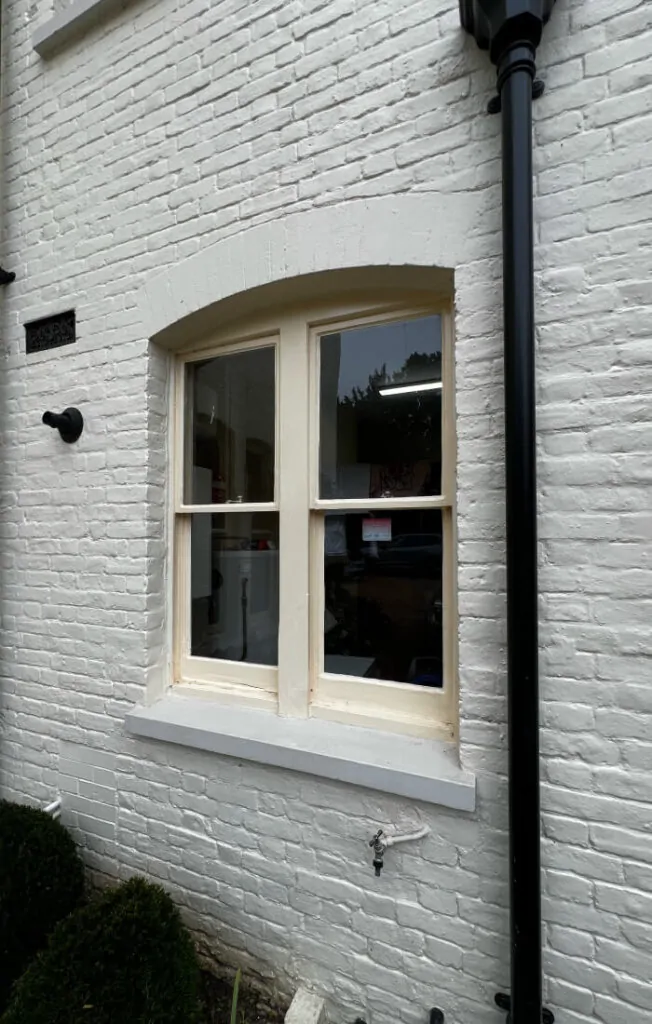The energy efficiency goals for period property owners create a challenging situation because they need to safeguard historic elements while achieving modern comfort standards. The replacement of historical wooden windows creates a deep sense of sadness because these windows hold special aesthetic value.
Homeowners can achieve better home performance through a solution which maintains their home’s original design. The solution requires both knowledge and improvement of U-values for your windows.
The guide explains U-values including their definition and the regulatory framework in the UK and their effect on EPC ratings. The article demonstrates how modern retrofit solutions enable wooden window owners to meet current standards while maintaining their historic home value and saving money.
What Exactly is a U-Value?
The insulation performance of a material determines its U-value because this value shows how much heat escapes through a window.
The measurement unit for this principle is watts per square metre per Kelvin (W/m²K) which shows that lower U-values indicate better window insulation performance.
The complete structure of a window determines its performance level rather than the glass component alone. The two types of U-value measurement systems differ from each other through this particular characteristic.

Centre-Pane vs. Whole-Window U-Values
The centre-pane U-value (Ug) functions as the main value which manufacturers use to show glass unit performance at its best point in the center. The whole-window U-value (Uw) serves as the main value which determines the total performance of the window system.
The method produces better results because it evaluates the entire window system which includes both the glass and frame materials such as timber or uPVC and the spacer bars that divide the glass sections.
The frame serves as a thermal bridge which allows heat to move from inside areas to outside spaces. Timber frames, like those found in traditional sash windows, offer better insulation than standard aluminium frames. The spacer bars that exist in older double-glazing units function as the main source of heat loss within these systems.
Traditional spacers are made of aluminium, a highly conductive metal that creates a “cold edge” around the perimeter of the glass, leading to significant heat loss and potential condensation problems. The high-performance windows use modern warm-edge spacers which consist of foam or plastic materials to achieve better efficiency.
Because the frame and spacers are typically less efficient than the glass, the whole-window U-value is always higher (worse) than the centre-pane value. UK building regulations are based on the whole-window U-value, so this is the figure you should always look for.
Here’s a comparison of typical whole-window U-values:
| Glazing Type | Typical Whole-Window U-Value (W/m²K) |
| Single-Glazed Timber Window | 4.8 – 5.8 |
| Older Double-Glazed Window | 2.8 – 3.5 |
| Modern Double-Glazed Window | 1.2 – 1.6 |
| Six Over Six Retrofit Service | 1.1 – 1.4 |
The heat loss through your windows will decrease by more than 75% when you switch from single glazing to a modern retrofitted system.
U-Values and UK Building Regulations
The UK Building Regulations require window replacements to meet Part L standards which focus on fuel conservation and power efficiency. The Future Homes Standard includes these regulations as part of its program to improve home energy efficiency according to government plans [1].
The rules for existing homes require replacement windows to achieve a whole-window U-value of 1.4 W/m²K or better. The maximum value for new construction projects stands at 1.2 W/m²K.
The local authority will enforce penalties against you when you fail to meet window standards which will require you to pay for window replacements. Working with a FENSA-certified installer ensures your windows meet all required standards.
Improving Your U-Value Without Replacing Your Windows
The thought of removing original wooden sash windows from period homes causes deep distress to owners of such historic properties. The complete removal of the system remains the sole solution to this problem.
The process of retrofitting or reglazing enables homeowners to keep their original timber frames while upgrading to contemporary double-glazing units which provide better performance.
The replacement process requires technicians to remove single-pane glass before they install vacuum-insulated or gas-filled double-glazed units which have slim profiles. Six Over Six specializes in this method to preserve original sash windows while enhancing their performance to meet contemporary standards.
The installation of our advanced glazing system enables you to achieve a whole-window U-value between 1.1 and 1.4 W/m²K which meets building regulations and enhances home comfort while maintaining your home’s original character. The system offers multiple advantages which extend beyond its ability to improve thermal performance.
Our retrofit service enables you to achieve a peaceful home environment through its effectiveness at reducing external noise and improving security while it blocks drafts and stops condensation.
The Impact of U-Values on Your Property’s EPC Rating
An Energy Performance Certificate (EPC) functions as the primary evaluation factor which determines both your property’s market value and its selling potential. The heat loss through windows can reach 25% in certain houses which makes window performance a critical factor for your EPC rating.
An EPC assessor will assess your window glazing and frame materials and the age of your windows to determine their U-value rating. Single-glazed windows from the past will cause your property value to decrease.
The installation of energy-efficient double glazing units will improve your EPC rating by one or two bands which means you could move from a D to a C rating. The system generates financial savings through its energy efficiency while it increases both property value and market appeal for buyers and renters.
Save all documentation from window upgrades because assessors will use default values when no performance evidence exists.
A Smart Solution for Landlords: Compliance Without Compromise
The law requires landlords to maintain their properties at energy-efficient standards. All privately rented properties in the UK need to achieve an EPC rating of E according to the Minimum Energy Efficiency Standards (MEES) [2]. The upcoming requirement to achieve a C rating will create major difficulties for landlords who own period properties.
Our retrofit service offers a straightforward path to compliance. The method of reglazing instead of window replacement enables you to meet regulatory standards while enhancing your EPC rating through an affordable solution.
The method maintains your period property character and value while it causes minimal tenant disruption and enhances rental market appeal. The higher EPC rating enables you to command better rental prices because energy-efficient properties attract tenants who stick around longer which results in less turnover and fewer empty units.
The investment proves to be smart and results in protecting your asset while delivering an efficient and comfortable home for your tenants.
Conclusion: The Clear Choice for Your Windows
Understanding U-values is the first step towards a warmer, more valuable, and compliant property. The choice between preservation and performance exists for people who own single-glazed wooden windows as homeowners and landlords.
The process of retrofitting existing frames with contemporary double glazing units enables you to preserve the classic appearance of timber frames while achieving improved thermal performance and reduced noise levels.
The investment stands as a wise economical choice which boosts your property’s worth while delivering instant comfort advantages.
References
[1] GOV.UK. (2021). The Future Homes Standard. [Online]. Available at: https://www.gov.uk/government/consultations/the-future-homes-standard-changes-to-part-l-and-part-f-of-the-building-regulations-for-new-dwellings
[2] GOV.UK. (2022). Domestic private rented property: minimum energy efficiency standard – landlord guidance. [Online]. Available at: https://www.gov.uk/guidance/domestic-private-rented-property-minimum-energy-efficiency-standard-landlord-guidance




